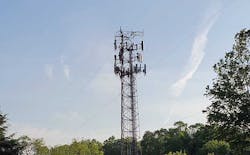Rise of Wireless IoT Devices Presents Challenge for Network Operations
By 2022, the world’s networks will connect to 14.6 billion Internet of Things (IoT) devices, according to projections from the Cisco 2020 Global Networking Trends Report. That growth has major ramifications for IT operations, as connected gadgets increase the scale of wireless networking and prompt changes in traffic patterns and security.
Cisco expects wireless IoT devices to become “increasingly ubiquitous in all aspects of our lives.” You may already use a few of them at home, but if you don’t yet depend on them at work, you will soon.
Machine-to-machine (M2M) activity may soon make up the bulk of your wireless gadgets on a network. Cisco’s forecast indicates that IoT M2M devices will account for 51% of all networked devices by 2022, with most of them connecting to a network wirelessly.
The possibilities for M2M connections are nearly endless, with the gadgets ranging from high-tech wastebaskets that tell you when to empty them or water sensors that alert you to a burst pipe. An example related to wireless IT management, in particular, is that of temperature sensors. Keeping the environment at the proper temperature is crucial in data centers, and wireless sensor networks (WSNs) can create a more energy-efficient cooling environment.
Using WSNs well requires a meshed network of individual sensors linked by a common wireless fidelity network. Since each sensor gives an accurate temperature reading, a facility manager can accurately determine the overall conditions and whether to make changes.
Automation Could Streamline Your Efforts
With that type of growth ahead, now is an ideal time to assess how you will or might implement wireless technology to assist with IT operations. When companies move forward with IoT projects for their buildings, many see cost savings of 10 to 15% after making those decisions.
There’s room for improvement in IT operations, the Cisco report concludes. It revealed that 35% of network strategists identified troubleshooting as their most time-consuming process for today’s network operators. That’s likely because another statistic in the report indicated that 34% of organizations still manually manage access specifics for their wired and wireless networks.
The better news is that 40% of those polled are exploring how automation could handle some of the legwork. They’re exploring policy automation and segmentation, and 15% of respondents are using artificial intelligence (AI) access solutions.
When looking at wireless IT management options, don’t forget to also investigate ways to keep the network secure as you add more devices to it. Artificial intelligence helps mitigate risks in physical and online realms. One of the reasons it works so effectively is because the technology detects anomalies. If someone accesses a network-connected device at a strange time, you might receive a push notification that spurs further investigation.
The research also offers a use case that combines the IoT with intent-based security. An intent-based network is one governed by a business need or policy. Security parameters get automatically applied so that authorized parties can only gain access based on what the enterprise policy allows.
Cisco offers an example example involving IoT optical sensors that enable a new augmented reality (AR) cloud-based business application. All facilities within the company’s network receive the physical sensors for this business-critical application. The company requires highly secure sensors to process traffic that is not time- or latency-sensitive.
Besides applying intent-based security policies to each sensor, the network continuously detects new sensors and subjects them to the same security specifics. Also, the sensors and their traffic get segmented to a specific part of the cloud. This example gives you an idea of how IoT devices may impact how a company safeguards its network.
Wireless Innovation Supports Businesses
Guillermo Diaz, the SVP of customer transformation at Cisco, sees a direct link between wireless innovation and business innovation. “We find that digital business innovation requires and drives advances in wireless innovation while, at the same time, advances in wireless innovation themselves are opening up possibilities for new business innovations. It’s the virtuous cycle,” said Diaz.
With that insight in mind, consider how your wireless tech investments could positively impact your IT management needs and help the business thrive. For example, you might buy wireless sensors to keep tabs on resource usage and see suggestions to improve it.
Wireless products for IT management could give you accurate perspectives of what’s happening with the equipment connected to a network even when you aren’t on-site. Matt MacPherson, Cisco’s CTO for wireless technologies, explained, “…a warehouse can be outfitted with millions of sensors to allow autonomous electric robots and vehicles to fulfill orders and ship products.” Your IT operations probably don’t happen in a warehouse, but some technology crossover exists.
Predictive maintenance via wireless sensors is becoming more popular in industrial facilities such as warehouses and manufacturing plants due to the need to prevent costly shutdowns. Imagine if you got warnings about failing IT equipment before people notice anything out of the ordinary. Smart sensors could give them to you, but only after a commitment to putting in the hard work to discover how best to apply predictive maintenance within the organization.
New Thinking Needed for Maintaining Wireless Networks
Many people now depend on apps such as Waze and Uber that can make a substantial difference in their lives. They expect these apps to work whenever and wherever they’re needed. Companies are more often using mobile apps to meet their business requirements. They might depend on cybersecurity apps to alert them to possible intrusions or invest in data analytics applications that help them better understand customers’ needs.
Since that growing dependence on wireless will likely affect your IT operations, it’s crucial to rethink how you work with wireless networks in your role. The research from Cisco highlights how the traditional ways of deploying and maintaining wireless networks fall short of today’s needs. They’re no longer sustainable, considering how the wireless network must allow business-critical apps to function without hiccups.
Troubleshooting wireless networks, for example, is now too often a manual and resource-intensive process. It could become even more problematic as the number of IoT devices connected to it goes up. Although many of those gadgets function on Wi-Fi 6 and 5G networks, Cisco recommends that network professionals take the time to manage more specialized wireless technologies for unique or demanding use cases.
Another recommendation given was that NetOps teams start becoming more proactive about all aspects of wireless IT management. They can get more visibility into network health and performance by relying on analytics and AI. Maximizing those technological offerings requires connecting the wireless tech to those platforms and understanding what kind of data you could get.
Succeeding may mean combining Wi-Fi-enabled monitoring tech with battery-powered IoT solutions. For example, HSB offers those kinds of sensors that detect moisture from leaks, plus freezing conditions. The company says its solution installs in less than 30 seconds and provides 24/7 building monitoring. The sensors operate with cellular technology, which means they accommodate areas with weak or no Wi-Fi.
One of the repetitive themes in Cisco’s research was that network professionals must evolve, especially considering the increasing number of IoT devices used, and the ways to use complementing software to extract data from monitoring equipment, like sensors.
Making your wireless investments pay off requires continual awareness of the needs expressed by your team and the enterprise at large, then exploring the most effective ways to use the available tech.





